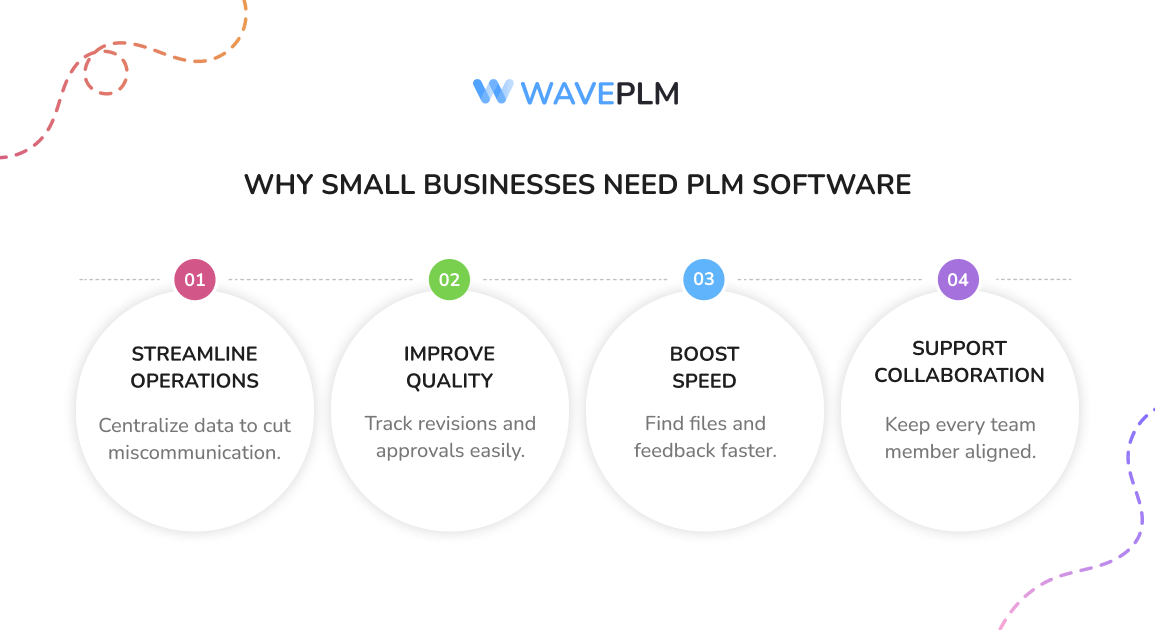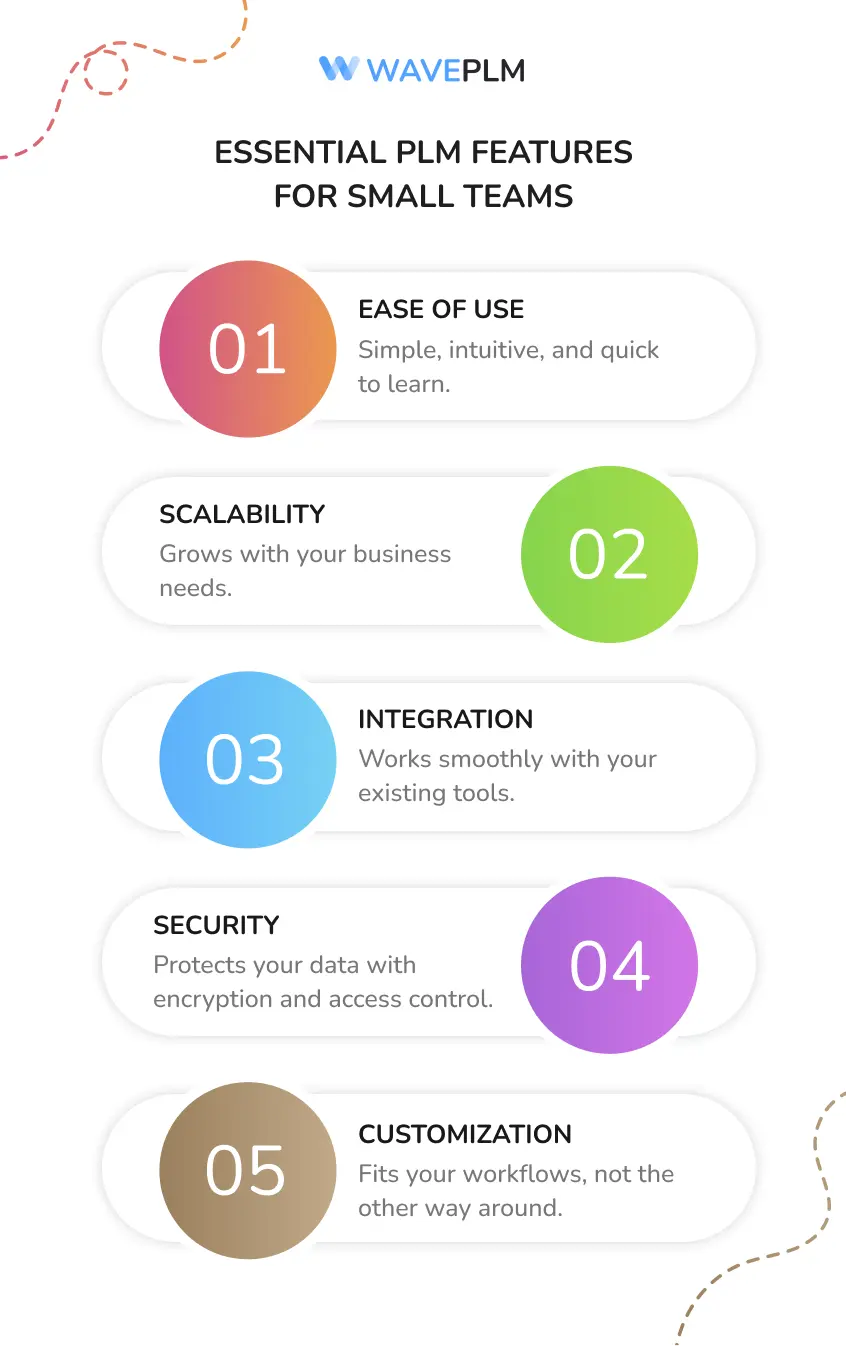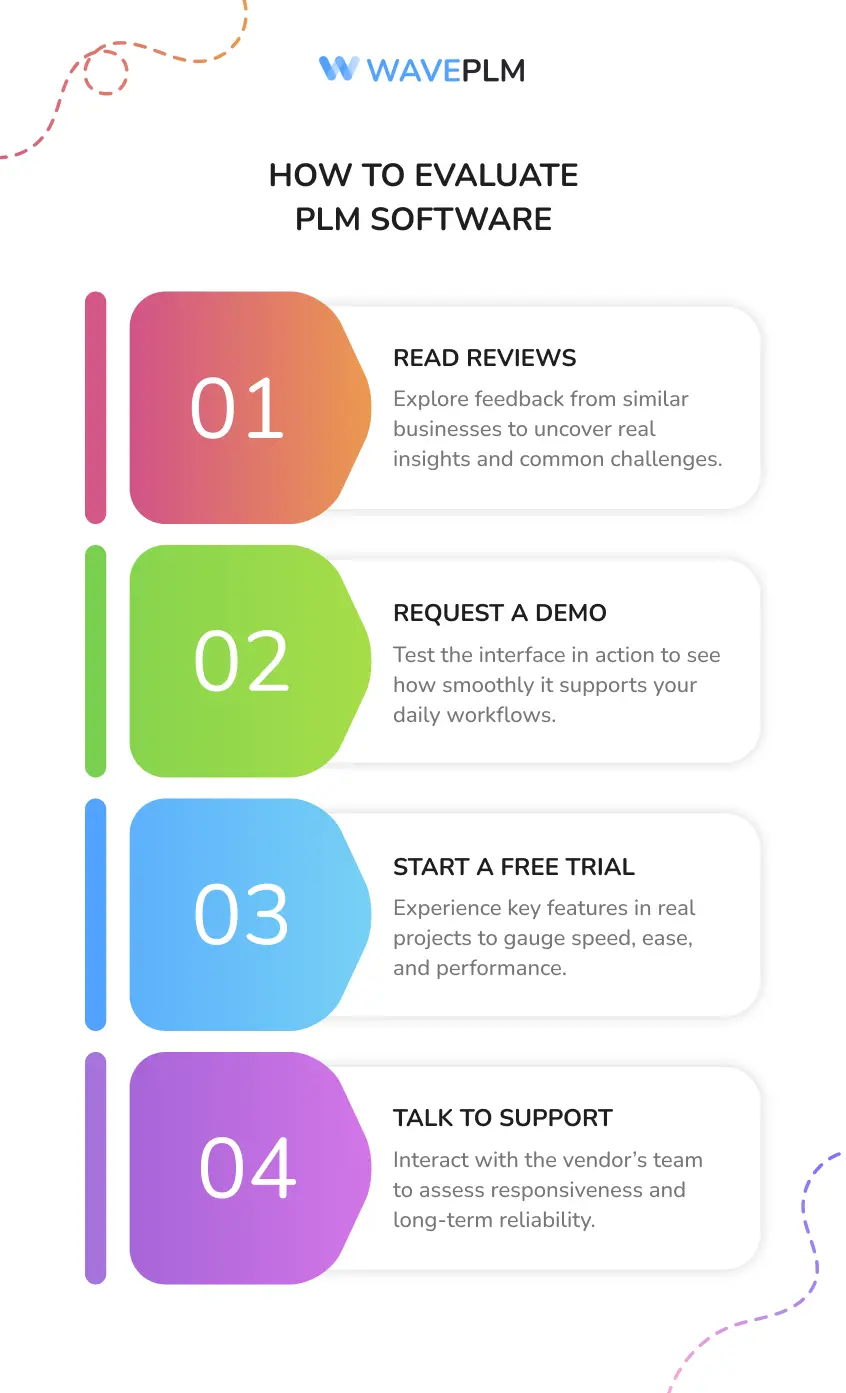
Product Lifecycle Management (PLM) software is no longer just for large enterprises. Today, even small businesses can benefit from tools that streamline product design, development, and management. The right PLM system saves time, reduces errors, and helps teams collaborate better.
In this guide, we’ll explore the best PLM software options for small businesses, the benefits they offer, and how to pick the right one for your needs. We’ll also look at how Wave PLM helps small brands grow faster and smarter.
What Is PLM Software?
PLM software manages a product’s entire journey—from concept to production and beyond. It centralizes product data, automates workflows, and connects teams across design, sourcing, and production.
For small businesses, PLM creates structure and visibility. It keeps every stakeholder updated, ensuring smoother collaboration and faster decision-making.
Common PLM features include:
| Feature | Description |
|---|---|
| Document Management | Organizes design files, BOMs, and specifications in one place. |
| Workflow Automation | Speeds up approvals and eliminates manual tracking. |
| Data Integration | Connects CAD, ERP, and other software tools. |
| Version Control | Prevents confusion between old and new design versions. |
| Collaboration Tools | Allows cross-functional teams to work together easily. |
By managing complex product data efficiently, PLM software gives small businesses a professional edge. It improves product quality and shortens time-to-market—key advantages in competitive industries.
Why Small Businesses Need PLM Software
Running a small business often means juggling multiple roles—designer, supplier manager, and project coordinator all at once. PLM software helps simplify this chaos.
Here’s how it supports small teams:
- Streamlines operations: Centralizes data and processes, reducing miscommunication.
- Improves quality: Tracks revisions and approvals to minimize errors.
- Boosts speed: Reduces time spent searching for files and managing feedback.
- Supports collaboration: Keeps everyone—from designers to manufacturers—on the same page.
Without PLM, businesses risk product inconsistencies, missed deadlines, and costly rework. With PLM, small teams can focus on creativity and innovation.

Key Benefits of PLM Software for Small Businesses
| Benefit | How It Helps |
| Centralized Product Data | Keeps all product info accessible and organized. |
| Faster Product Launches | Reduces time-to-market through automated workflows. |
| Improved Quality Control | Monitors every stage of development. |
| Enhanced Collaboration | Unites teams and vendors on one platform. |
| Cost Efficiency | Reduces waste and optimizes resource use. |
Wave PLM, for example, offers all these advantages in a user-friendly interface tailored for fashion and consumer goods brands. It’s built for businesses that want professional results without enterprise-level complexity.
Essential Features to Look For
When selecting PLM software, focus on features that match your operations. Here’s what small businesses should prioritize:
- Ease of Use: Choose software with a simple, intuitive interface. Small teams can’t afford long training periods.
- Scalability: Pick a solution that can grow with your business.
- Integration: Ensure it connects smoothly with tools like CAD, ERP, or accounting systems.
- Security: Protect product data with reliable encryption and access control.
- Customization: Tailor workflows and fields to fit your business processes.

Affordable PLM Software Options
Not all PLM tools are expensive. Many providers now offer flexible plans that fit small-business budgets.
Pricing Models to Consider:
| Model | Description |
| Subscription-Based | Pay monthly or annually, with easy scalability. |
| Pay-as-You-Go | Adjust payments based on usage. |
| Open Source | Free or low-cost solutions with community support. |
Tips for Choosing an Affordable Option:
- Compare total cost of ownership, including training and setup.
- Check customer reviews for reliability and support quality.
- Request demos and free trials before committing.
Top 4 PLM Software for Small Businesses in 2025
| PLM Software | Target Industry | Best For | Key Features | Website |
|---|---|---|---|---|
| Wave PLM | Fashion & Apparel | Small to medium fashion brands | Trend forecasting, product development, customisation, integrations | waveplm.com |
| Upchain | Manufacturing | Product developers | Design collaboration, supplier integration | upchain.com |
| OpenBOM | Manufacturing & Engineering | Small teams | Inventory tracking, CAD integration | openbom.com |
| Propel PLM | Consumer Goods | Startups and SMBs | Salesforce integration | propelplm.com |
Each of these platforms has strengths depending on your goals and budget. For fashion and apparel businesses, Wave PLM stands out—it offers end-to-end lifecycle management designed for fast-moving brands.
How to Evaluate PLM Software
Before investing, evaluate software through real user experiences and testing.
Evaluation Steps:
- Read Reviews: Check feedback from businesses similar to yours.
- Request a Demo: Test usability and navigation.
- Start a Free Trial: Assess real-world performance.
- Talk to Support: Gauge vendor responsiveness.
During your trial, test how easily the software fits your workflow and integrates with your current tools.

Implementation Tips for Small Businesses
Implementing PLM software doesn’t have to be overwhelming. Follow these steps for a smooth rollout:
- Set Clear Objectives: Define your goals before setup.
- Involve Key Team Members: Encourage collaboration from day one.
- Provide Training: Invest time in helping your team get comfortable.
- Start Small: Roll out features gradually, then expand.
Wave PLM, for instance, provides onboarding support to ensure small businesses adopt the system successfully without downtime.
Common Challenges and How to Overcome Them
Small businesses face unique challenges when adopting new software. Here’s how to tackle them:
| Challenge | Solution |
| Limited IT Resources | Choose cloud-based solutions with vendor support. |
| Budget Constraints | Start with essential modules; upgrade later. |
| Resistance to Change | Offer training and show measurable benefits. |
| Data Migration | Plan carefully and test before full implementation. |
Being proactive helps avoid disruptions and ensures smoother integration.

Why Choose Wave PLM for Small Businesses
Wave PLM simplifies complex product development. It’s built for small fashion and consumer goods brands that need professional-grade tools without enterprise costs.
Wave PLM Highlights:
- Easy-to-use interface for small teams
- Cloud-based access for remote collaboration
- Affordable subscription model
- Integration with design and sourcing tools
- Real-time updates across departments
Wave PLM supports businesses at every step—from initial design to production tracking—helping brands bring products to market faster and smarter.
Final Thoughts
Choosing the right PLM software can transform your small business. It improves efficiency, cuts costs, and boosts product quality. Start by understanding your needs, test available options, and choose a platform that fits your growth path.
Wave PLM offers an ideal balance of affordability, functionality, and ease of use—making it the perfect choice for small teams ready to scale their product development.





Leave a Reply